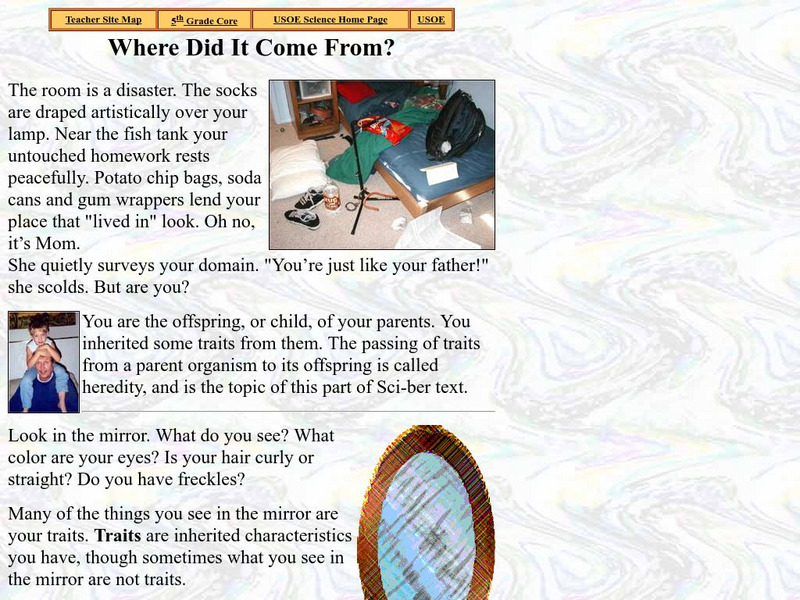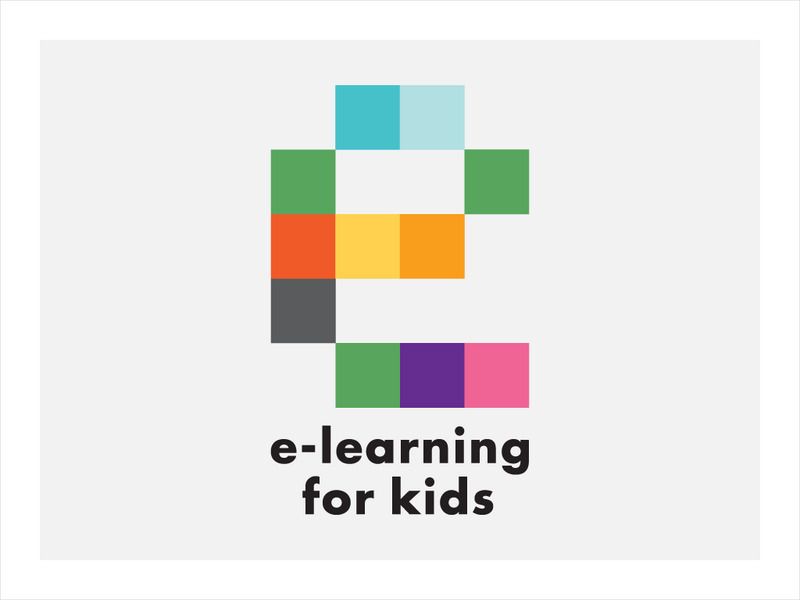Chem4kids
Chem4 Kids: Symbols in Chemical Equations
Chem4Kids! provides an overview of the symbols representing numerical values in chemical equations. Each symbol is defined and described.
Chase Young, PhD
Dr. Chase Young, Ph D: Reader's Theater Script: Rump and Ugla [Pdf]
A reader's theater script for the modern fairy tale, Rump and Ugla, is provided on these pages. Six character roles are needed in this activity.
PBS
Pbs Kids: Design Squad: Build: Balance Magic
See if you can balance a sculpture on the end of a toothpick!
Daily Teaching Tools
Daily Teaching Tools: Responding to Literature Forms
This Daily Teaching Tools resource provides graphic organizers including a book critique form, response journals, adding an ending, and book log.
US Department of Energy
Need Project: Solar Oven [Pdf]
An introduction and activity to engage students in building a solar oven.
Other
New York State Education Department: Eighth Grade Math, Book Three (2006) [Pdf]
Part three of three; The March 2006 8th grade Math test from the State of New York. The test is 12 open-response questions dealing with topics such as algebra (solve for a variable, write function rules), geometry (translations, parallel...
Chem4kids
Chem4 Kids: Atoms
This site provides a detailed overview of atoms. Content explores an atom's structure, as well as what ions are, how atoms bond, what compounds are (including how to name compounds), and what isotopes are.
Utah State Office of Education
Utah Science: The Mysterious Force
There is a secret mysterious force in your home right this very moment! Try these activities to first identify that force and then extend your knowledge of the force by investigating the other activities provided.
Utah State Office of Education
Utah Science: Where Did It Come From?
Is your room a mess? Does your nose have freckles on it like your mom's? Are your eyes the same color as your dad's? Which one of these things does not belong in lessons about heredity? Give these investigations a whirl while learning...
Utah State Office of Education
Utah Science: Matter
Discover atoms and molecules which make up matter, motion of atoms and how to measure the mass, volume and density of matter.
American Museum of Natural History
American Museum of Natural History: Create Your Own Time Capsule
By making time capsules, we can decide what message to send to the future about our own lives. If it were discovered years from now, what would the objects say about you and the time you lived in?
American Museum of Natural History
American Museum of Natural History: Trip Up Your Brain
Try this trippy experiment to fool your brain.
Capital Community College Foundation
Guide to Grammar and Writing: Fragments and Types of Sentences
Ten questions asking students to identify the difference between complete sentences and sentence fragments.
E-learning for Kids
E Learning for Kids: Science: Titanic Shipwreck: What Are Food Webs?
Jorge is a cook in an underwater restaurant. He knows a lot about food webs. Dive in and learn about it with him.
American Museum of Natural History
American Museum of Natural History: O Logy: If Rocks Could Talk: Sandstone
A simple explanation of how sandstone rock is formed.
Scholastic
Scholastic History Mystery: Civil Rights Movement: Game 2
Learning game in which students solve a mystery and complete the puzzle with the fewest clues in the Civil Rights category.
Beacon Learning Center
Beacon Learning Center: Sam's Similar Shapes
Students learn about and practice identifying similar figures in this interactive web lesson.
Beacon Learning Center
Beacon Learning Center: Did I Read?
Explicit and implicit information are reviewed in this lesson. Students will choose a part of the body and then read a short passage that explains what it does. Students will answer three questions over the passage and then determine...
Polk Brothers Foundation Center for Urban Education at DePaul University
Depaul University: Center for Urban Education: Improve an Argument [Pdf]
This resource provides a downloadable worksheet. Students will read a nonfiction article and then answer scaffolded questions that will help them determine the strength of evidence presented in the argument. Then students will provide...
Polk Brothers Foundation Center for Urban Education at DePaul University
De Paul University: Center for Urban Education: I Can Draw Conclusions: History Analysis [Pdf]
Graphic organizers are provided to help analyze the importance of people in history and to place events in chronological order. Guiding questions are provided to help guide students
Polk Brothers Foundation Center for Urban Education at DePaul University
De Paul University: Center for Urban Education: I Can Identify and Infer Character Traits[pdf]
Students will identify character traits directly and inferentially with the help of this graphic organizer. Students will summarize their findings after completing the graphic organizer.
Polk Brothers Foundation Center for Urban Education at DePaul University
De Paul University: Center for Urban Education: Classify and Summarize Information [Pdf]
This learning module contains a link to graphic organizers that will help students categorize content and comprehend short and extended texts. The graphic organizers are designed to be applied to reading nonfiction passages in science...
Polk Brothers Foundation Center for Urban Education at DePaul University
De Paul University: Center for Urban Education: Can Contrast and Evaluate Fact, Opinion [Pdf]
This site provides a poster that will guide students as they contrast and evaluate facts and opinions. Guiding questions and student prompts are provided.
Polk Brothers Foundation Center for Urban Education at DePaul University
Depaul University: Center for Urban Education: Illustrate a Text [Pdf]
This module includes links to pages that can be used to illustrate a text. Links to an illustration planner, picture meaning, and show vs. tell resources are included.



![Dr. Chase Young, Ph D: Reader's Theater Script: Rump and Ugla [Pdf] Activity Dr. Chase Young, Ph D: Reader's Theater Script: Rump and Ugla [Pdf] Activity](https://d15y2dacu3jp90.cloudfront.net/images/attachment_defaults/resource/large/FPO-knovation.png)











![De Paul University: Center for Urban Education: Classify and Summarize Information [Pdf] Unit Plan De Paul University: Center for Urban Education: Classify and Summarize Information [Pdf] Unit Plan](https://content.lessonplanet.com/knovation/original/78057-7ba90e0b8b82fde8e26d306a4af31f79.jpg?1661787062)
![Depaul University: Center for Urban Education: Illustrate a Text [Pdf] Unit Plan Depaul University: Center for Urban Education: Illustrate a Text [Pdf] Unit Plan](https://content.lessonplanet.com/knovation/original/78082-d640d8eacd08249b4e95371fd0841ddc.jpg?1661787071)